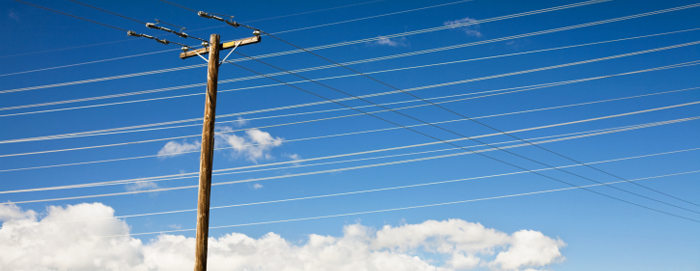
As this column is being written, the mid-Atlantic region of the United States is still recovering from “Superstorm Sandy.” The damage to bridges, tunnels, roads, water treatment plants, the power grid and other infrastructure was unprecedented. The disaster has sparked renewed discussion of how we might harden our infrastructure against natural disasters, even as climate scientists are predicting that storms such as this might become more frequent.
One of the most notable impacts of the storm was the loss of electric power to millions of customers for extended periods of time. Although many substations were inundated, the delay in recovery was in large part due to the incredible number of power lines and poles that were brought down, forcing technicians to rebuild the system almost foot by foot.
As power engineers analyze the situation, the discussion has turned to the question of whether power lines would be better protected if they were below ground. Clearly, underground lines are safer from wind damage, but what about flooding? Well, despite the devastating flooding in lower Manhattan, the Consolidated Edison Company of New York (“Con Ed”) was able to bring its underground-line-fed customers back on-line much more quickly than some other utilities, such as the Long Island Power Authority, were able to restore customers served by strung wires in less-flooded areas. The issue, however, as in much of engineering, comes down to a cost-benefit analysis: it is more expensive to bury the conductors than to string them from poles.
Interestingly, this design consideration goes back exactly 120 years to Con Ed’s eponymous founder. Fresh off his success with the first central station, the Pearl Street Central Station in downtown New York, which opened on 4 September 1882, Thomas Alva Edison sought other customers for his electrical illumination system. He soon realized that the expense of an underground system would limit it to the largest cities. He therefore designed what he called a “village system,” with wires strung on poles. He used a 330-volt system (Pearl Street had been 100), and he grouped three lamps in parallel, further reducing costs. The trade-off there was that a single lamp could not be turned off and on by itself.
The first installation of this system opened in Roselle, New Jersey, just west of the important port of Elizabeth, on 19 January 1883. This date should be one of celebration for electrical engineers. Ironically, however, Roselle was one of the communities hard hit by Sandy. The debate about infrastructure is, therefore, sure to continue, and IEEE is sure to play a leading role.
Special Historical Note: Regular readers of IEEE-USA’s Today’s Engineer have often seen the history column refer to the birth of IEEE in 1884. But that year really saw the birth of just one of the predecessor organizations of IEEE, the American Institute of Electrical Engineers (AIEE). It was on 1 January 1963 that AIEE officially merged with IRE (the Institute of Radio Engineers) to form the Institute of Electrical and Electronics Engineers in its current form, making THIS, in a sense, our 50th birthday. The story has been told in this column before, so it will not be repeated here.
To commemorate this anniversary, IEEE sent to members who had been members continuously since the merger (or longer!) a commemorative pin, and asked them to tell their story in the First-Hand History section on the IEEE Global History Network (GHN). The response has been extremely gratifying, and the site now contains dozens of fascinating stories of pioneers of the current technological age. Readers of this column are urged to explore these stories of personal interaction with technological innovation, and, whether or not they are 50-year members, to consider contributing their own.






